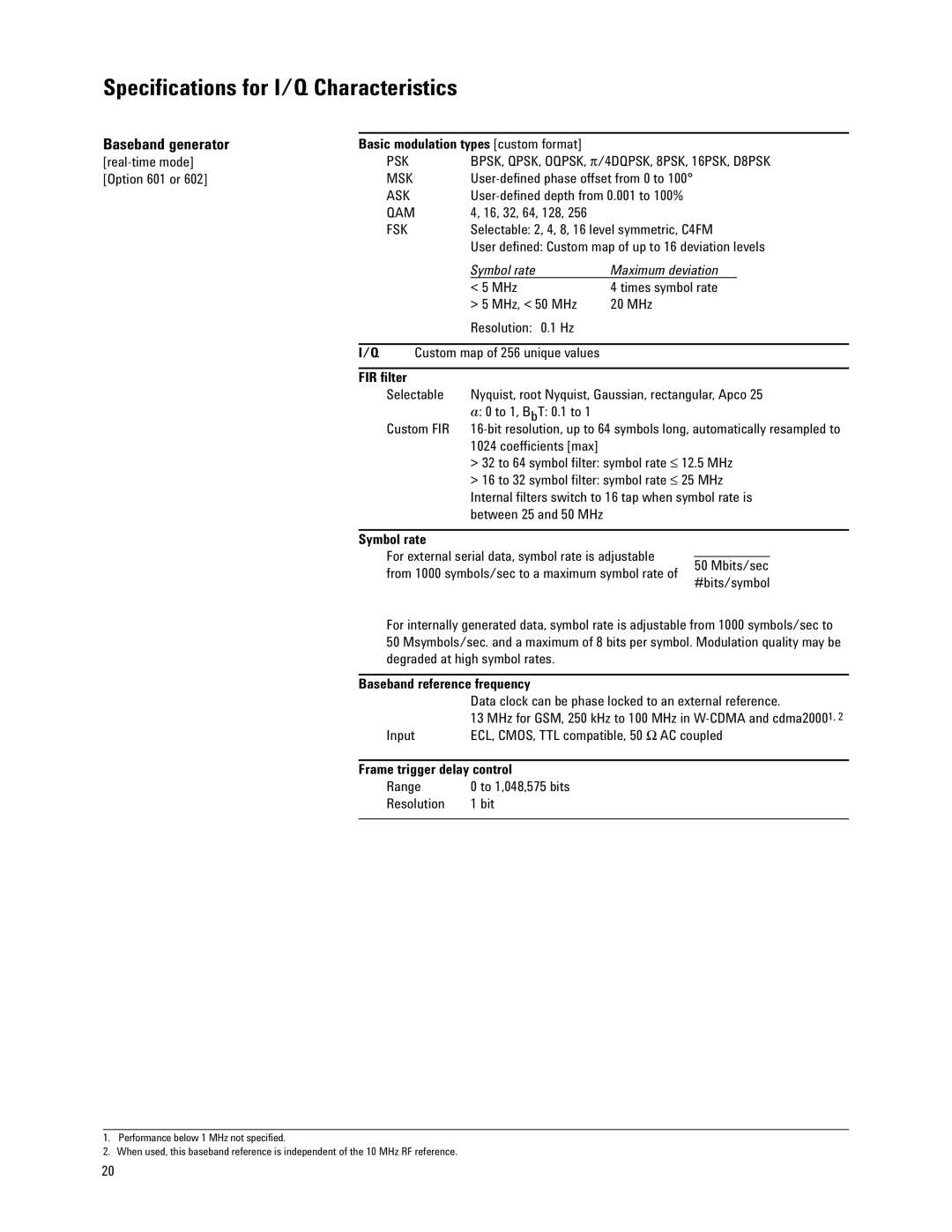
Specifications for I/Q Characteristics
Baseband generator
Basic modulation types [custom format] |
|
| ||
| PSK | BPSK, QPSK, OQPSK, π/4DQPSK, 8PSK, 16PSK, D8PSK | ||
| MSK | |||
| ASK | |||
| QAM | 4, 16, 32, 64, 128, 256 |
|
|
| FSK | Selectable: 2, 4, 8, 16 level symmetric, C4FM | ||
|
| User defined: Custom map of up to 16 deviation levels | ||
|
| Symbol rate | Maximum deviation |
|
|
| < 5 MHz | 4 times symbol rate | |
|
| > 5 MHz, < 50 MHz | 20 MHz | |
|
| Resolution: 0.1 Hz |
|
|
|
|
|
| |
I/Q | Custom map of 256 unique values |
|
| |
|
|
|
| |
FIR filter |
|
|
| |
| Selectable | Nyquist, root Nyquist, Gaussian, rectangular, Apco 25 | ||
| Custom FIR | a: 0 to 1, BbT: 0.1 to 1 |
|
|
| ||||
1024 coefficients [max]
>32 to 64 symbol filter: symbol rate ≤ 12.5 MHz
>16 to 32 symbol filter: symbol rate ≤ 25 MHz Internal filters switch to 16 tap when symbol rate is between 25 and 50 MHz
Symbol rate
For external serial data, symbol rate is adjustable
50 Mbits/sec
from 1000 symbols/sec to a maximum symbol rate of
#bits/symbol
For internally generated data, symbol rate is adjustable from 1000 symbols/sec to 50 Msymbols/sec. and a maximum of 8 bits per symbol. Modulation quality may be degraded at high symbol rates.
Baseband reference frequency
| Data clock can be phase locked to an external reference. |
| 13 MHz for GSM, 250 kHz to 100 MHz in |
Input | ECL, CMOS, TTL compatible, 50 Ω AC coupled |
| |
Frame trigger delay control | |
Range | 0 to 1,048,575 bits |
Resolution | 1 bit |
|
|
1.Performance below 1 MHz not specified.
2.When used, this baseband reference is independent of the 10 MHz RF reference.
20
